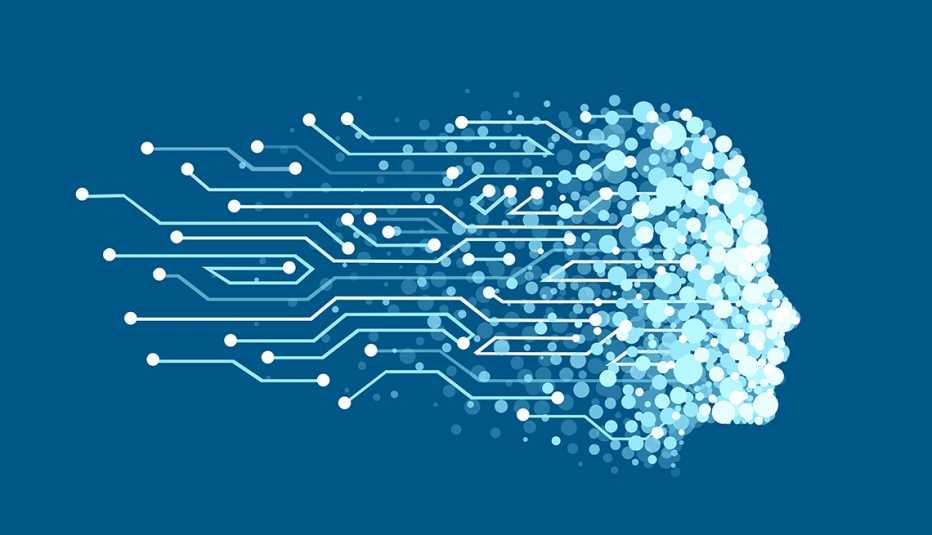AARP Hearing Center


ChatGPT exploded onto the scene a little more than a year ago to become the fastest-growing consumer application in history, suggesting a new future of tech had arrived and was not hyperbole.
San Francisco start-up OpenAI’s generative AI chatbot churns out computer code, letters, party ideas, poems, reports and scripts in seconds after typing a prompt. It became the poster child behind arguably the biggest change in computing since the internet, an artificial intelligence-fueled modern era.
Types of artificial intelligence
These aren’t the only types of artificial intelligence but can give you a glimpse of what’s out there.
Conversational AI. Advanced technology that allows computer programs to understand and respond to questions in everyday language, something that tech experts call natural language processing. This type of artificial intelligence includes chatbots and virtual assistants. Both generative and predictive AI are conversational.
Generative AI. A computer program that creates original content based on patterns of data it has accumulated rather than giving answers from something it already knows.
Predictive AI. This was the traditional artificial intelligence around before generative AI. It has the capability to learn from data and make decisions, predict next steps or solve problems based on that data.
Rule-based chatbots. These computer programs, which you’ll often encounter in customer service settings on websites, use scripts and information on a particular topic to generate answers to questions. At its most basic, if a customer asks a specific query, the bot responds with an answer already in its memory.
Although developments in artificial intelligence have been taking place since the mid-1950s, it took decades before the technology captured the public’s fascination with twin triumphs. In October 2011, a month after IBM’s Watson supercomputer defeated beloved Jeopardy! champion Ken Jennings, Apple added its Siri digital assistant to iPhones.
These days, OpenAI isn’t the only company exploring and exploiting AI technology on the front lines. Generative AI chatbots are trained on what techies refer to as large language models (LLMs), mammoth sets of data culled from the internet.
It’s worth emphasizing that these remain early times for AI, even though the technology was born 67 years ago. Chatbots are still beset by incomplete data and inaccuracies. They often spit out stuff that sounds plausible but is wrong or misleading, commonly known as “hallucinations.”
Given the daily stream of headlines, you need a scorecard to keep track of what every company is doing in the space or, at the very least, wish you could unleash an AI bot to help you stay on top of the topic.
Here’s a summary of what some leading AI companies have been up to lately and how you might engage with AI now or in the near future.
1. ChatGPT now knows some current events, responds to voice
ChatGPT rolled out Nov. 30, 2022, as mostly text-based, meaning you had to type a prompt into a computer and wait, usually not long, for a result.
On Sept. 25 of this year, OpenAI began bringing out fresh voice and image capabilities for ChatGPT. But for now, you must either be a business customer or subscribe to a $20-a-month ChatGPT Plus plan.
If you do, you can snap a picture of a landmark while sightseeing and have a live conversation with the bot about what you’re looking at. You might take a picture of your refrigerator or pantry to get ideas for dinner, something you might previously have needed to Google, tried to consult a recipe app or rummaged through your own cookbooks for inspiration.
You’ll also be able to have a back-and-forth conversation with ChatGPT, maybe to settle an argument or read a bedtime story to your kid or grandkid.
In November, OpenAI introduced customizable versions of its AIs called GPTs, available for now to Plus subscribers. Each GPT is tailored for a specific purpose.





































































More From AARP
FCC Wants to Fight Robocalls With Artificial Intelligence
Agency chief hopes to put technology to use ‘for good’Does ChatGPT Give Good Retirement Planning Advice?
How the AI chatbot handles saving, investment questions
Do You Work at a Job That AI Might Snatch Away?
Nearly 1 in 5 people work in a job that AI may affect